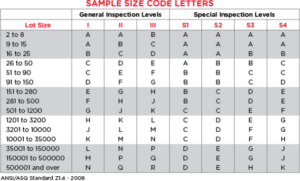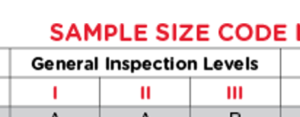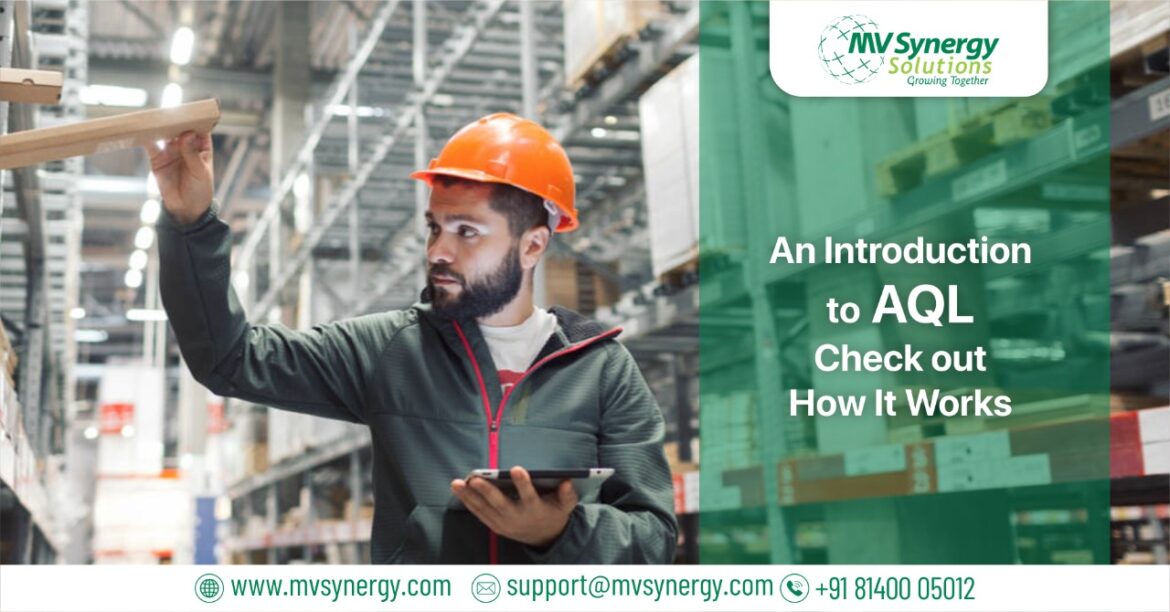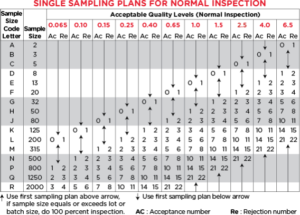An Introduction to AQL: Check out How It Works
What is AQL?
Acceptance Quality Limit (AQL) is an international standard for inspection sampling defined as the ‘quality level that is worst tolerable’ during product inspections. This limit refers to the percentage of defective products expected in a lot, shipment, or batch which are not detected by inspectors at specified confidence levels. Acceptance quality limits can be expressed as either a percentage or several defective items per lot.
AQL is also known as the quality level at which an inspector can accept a shipment as being within specifications. If the inspection detects more defects than what is specified in the AQL, then the entire shipment will be rejected. The purpose of using AQL is to ensure that products are not released with unacceptable levels of defects.
How is AQL Used in Practice?
AQL is used in practice to determine the number of products that can be accepted from a production run. This number is based on the percentage of defective products expected in a lot and the inspector’s confidence level in detecting these defects. For example, if a production run has a defect rate of 0.001% and the inspector’s confidence level is 95%, then the maximum number of products that can be accepted from the production run is 100.
AQL can also be used to determine whether a shipment should be inspected. In this case, the AQL is compared to the quality level of the products in the shipment. If the quality level of the products is higher than the AQL, then the shipment can be released without being inspected.
Why Use AQL?
The use of AQL helps to ensure that products are not released with unacceptable levels of defects. It also allows inspectors to set a limit on the number of defective products that can be accepted from a production run and to reduce the number of inspections. Acceptance Quality Limit (AQL) is an international standard for inspection sampling defined as the ‘quality level that is worst tolerable’ during product inspections. If you are planning to conduct product inspections, it is vital to understand how AQL works.
The Acceptance Quality Limit (AQL) table.
In Table 1 below, the intersection of the respective Lot Size and General Inspection Level indicates sample size code letter L.

Then, referring to Table 2, we locate row L, which indicates the required sample size of 200. To comply with AQL 2.5, no more than 10 units from that sample size may fail inspection.
3 Important Things to Understand About the AQL table.
We made certain assumptions. This first was that you would use General Inspection Level II in Table 1. The second was that you would use a 2.5% AQL level for major defects and a 4.0% level for minor defects. Below we will discuss some other alternatives.
#1 What are the General Inspection Levels? (Table 1)

There are three General Inspection Levels — I, II, and III. The level you choose is the main factor that determines how many units to inspect. In our example, we decided on Level II, which is the most common selection for general consumer products. Because of this, your sample size came out to 125 cups.
If you had chosen Level I instead, the inspector would check fewer cups, only looking at 50 of them. On the other hand, if you had chosen Level III, they would inspect more, in this case, 200 cups.
Why might you choose Level I or III?
Sometimes, inspecting fewer units (Level I) can reduce costs since the inspection takes less time. The downside is that you can have less confidence in the result. You should only conduct a Level I inspection if you have a long history and degree of trust with your supplier.
On the other hand, if you are working with a new factory or have had a spate of recent failures, you might opt to inspect additional units (Level III). An inspection with a larger sample size will take more time and effort to complete, thus costing more, but you can have more confidence in the results.
#2 What are the Special Inspection Levels? (Table 1)

There are four Special Inspection Levels — S-1, S-2, S-3, and S-4. Using the Special levels will give you a smaller sample size than any of the General levels do. For example, if you use Special Level S-1 on a 1,500-unit order, the inspector will only check 5 cups instead of the 125 from General Level II.
Why Would You Use the Special Inspection Levels?
The Special Inspection Levels do not generally apply to the entire inspection. Instead, they only apply to specific types of tests on your quality inspection checklist. For example, you might use General II to assess workmanship — checking for scratches, smudges, or cracks in the product, and you might use Special S-1 to check the dimensions of the outer carton.
- Typically, you can use the Special Inspection Levels when:
- Testing is destructive to your product,
- Testing is very technical or time-consuming, or
- Certain defects are of low concern, and you need to move quickly.
#3 What are the Various AQL Levels, Such as 1.0, 2.5, 4.0, etc.? (Table 2)
![]()
These different levels represent the AQL percentage you have chosen for your product. Keep in mind that they represent the maximum percentage of defects you are willing to tolerate over the course of many inspections.
The typical AQL levels for regular consumer products are:
- 5% for major defects
- 0% for minor defects
- 0% for critical defects
‘Major’ defects are those that will make your product unsaleable or lead to customer returns, while ‘Minor’ defects are only slight deviations from your specifications. ‘Critical’ defects are those that might pose a safety hazard to the consumer.
When working with a supplier overseas, it is important to understand Acceptance Quality Limits. AQL represents the minimum quality requirements for your product during inspections. The more you know about how it works, the better decisions you can make regarding whom to work with and what inspection levels are best suited for your needs.
For more information on AQL, please contact us at [email protected], We are more than happy to help!


